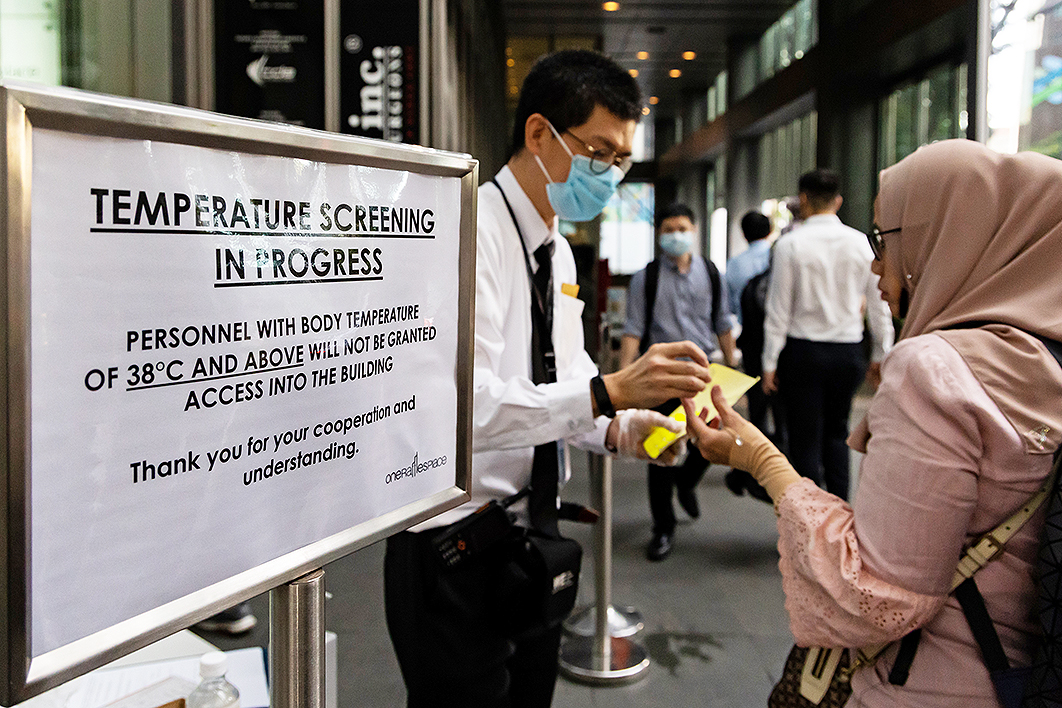“We were surprised by SARS,” the head of Singapore’s civil service, Peter Ho, admitted in mid 2005. “We were surprised by its epidemiology. We were unprepared for it. But we should have been prepared. It was not a fundamental surprise, because we knew that the risk of a highly infectious epidemic existed.”
Singapore learned from that bitter experience, and is now being applauded by journalists and politicians across the world for its response to Covid-19. The government’s prompt and thorough imposition of social distancing — and even its Big Brother–style contact tracing — is the envy of health authorities across the world.
I was living in Singapore, researching a book, during 2003 and vividly remember the government’s slow response to SARS. I watched the epidemic unfold day by day and could see that the response was woefully inadequate up until at least halfway through the crisis.
The outbreak began on 13 March 2003, but it was not until 20 April 2003 that the government started taking it seriously. During those five weeks, the government lost valuable time that could have kept the death toll below the thirty-three lives that were eventually lost.
During the first phase of the crisis, I attended a government-sponsored anti-SARS rally in Singapore. The local authorities put up a small marquee in a housing estate, set out hundreds of seats side-by-side, and hosted the family-oriented event in the high afternoon humidity. The throng listened as government-sponsored speakers (not doctors) gave lectures on the risks of contagion. Social distancing didn’t occur then — nor a week later, when the same marquee hosted a crowded concert with a local band.
This rudderless period only came to an end when SARS threatened Singapore’s aristocracy: the family of its founding prime minister, Lee Kuan Yew. Kwa Geok Choo, wife of Singapore’s first prime minister and mother of the current prime minister, was rushed to hospital with a fever in mid April. Although she was quickly diagnosed as SARS-free, the scare galvanised the government. Lee Kuan Yew, still a member of cabinet, kickstarted the response by creating two ministerial committees (“combat teams” in the government’s parlance) to handle the crisis, sidelining the health minister and putting the response on the most serious footing.
Once the government focused, it learned quickly. Thermal-imaging scanners were set up at the airport and at the bridge connecting Singapore with Malaysia. Like everyone else, I wasn’t allowed to enter a public building without a temperature check. Schoolchildren had their temperatures taken every morning and any child with a fever was sent home immediately. Some measures were more theatrical than practical, designed to build awareness and change personal habits, but the media and government conveyed a clear and consistent message.
When I wrote about my experiences in a book about health policy in the Asia-Pacific a couple of years later, I noted that the SARS experience meant that Singapore was likely to handle the next threatened epidemic much more effectively. Singapore introduced stringent quarantine laws and protocols, enforceable by large fines and public humiliation. The Communicable Disease Centre, once a rundown, low-tech facility designed to cope with HIV/AIDS, now includes state-of-the-art isolation wards.
Now, the military, police and myriad other social instruments are geared to track the movements of suspected disease carriers, and those who they might have been in contact with. And the uniquely Singaporean system of social monitoring has been expanded to facilitate routine temperature taking, at short notice, of people with high fevers.
But while Singapore learnt from its experience, recent signs suggest that it risks letting politics undo much of its good work. Last week prime minister Lee Hsien Loong set the worst example by going on a walkabout through his constituency, only to be mobbed by a crowd of supporters seeking some of the — wait for it — hand sanitiser he was distributing. The walk, which took place during an uptick in Covid-19 infections, is likely to be a prelude to calling a general election in or near May, a year earlier than required.
Regardless of the conduct of Singapore’s politicians, though, Australia and the rest of the world would do well to learn from the actions of the city state’s service and health professionals. Covid-19 is a much more serious threat than SARS and the cost of dealing with it will be much higher.
It would have been better if the Australian government had sent out clearer messages about the pandemic weeks ago. Singapore has shown how the threat can be managed, and no doubt Australian policymakers have been watching closely. •




